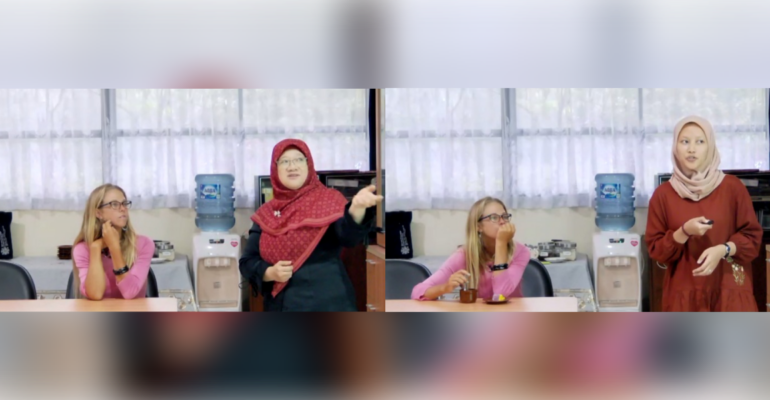Department of Biology IPB University Holds Seminar, One of Which Reveals Why Bees Like to Colonize

Department of Biology, Faculty of Mathematics and Natural Sciences (FMIPA) IPB University held another Biology Seminar, Thursday (2/11). The main topic discussed is related to bees and the issues that save them from a biological perspective. The participants who attended were students of the Biology Department of IPB University.
This seminar presented two students, one of whom was from a foreign university. The second student is Katrina Klett, a doctoral student from the Department of Natural Resources Scientific Management, University of Minnesota and Tiara Sayusti, a student in the Animal Bioscience Study Program, Department of Biology, IPB University.
Prof Rika Raffiudin, lecturer at the Department of Biology at IPB University who led the seminar, said that this activity aimed to disseminate research results related to bees. Students must also know the importance of society’s role in the environment, she continued.
“I hope that this seminar can enlighten all of us regarding bees, especially regarding their characteristics, morphology, physiology and their relationship with populations and environmental trends,” she said.
Katrina Klett specifically discusses nutritional factors that trigger swarming behavior in bee colonies. This swarming behavior is closely related to the reproductive activities of bees, thus affecting the population size in an area. This behavior, let’s call it Katrina, is also influenced by the type of pollen found in its habitat.
“The key to swarming behavior that encourages reproductive activity is influenced by the consumption of pollen which is the food source, more precisely the protein vitellogenin,” she explained.
“Agricultural land must be managed holistically so that it can protect the habitat and food sources of pollinators or bees because bee populations have an important role in sustainable agriculture,” added Katrina.
Meanwhile, Tiara discussed morphology, nest structure and molecular characteristics of stingless bees in the West Sulawesi and South Sulawesi regions. She collected specimens from five regions in South Sulawesi and two regions in West Sulawesi.
“The identification method used uses morphological and morphometric analysis. “As a result, there are five types of stingless bees that can be separated morphologically, but cannot be separated morphometrically,” she concluded. (MW/Rz) (IAAS/YMK)



